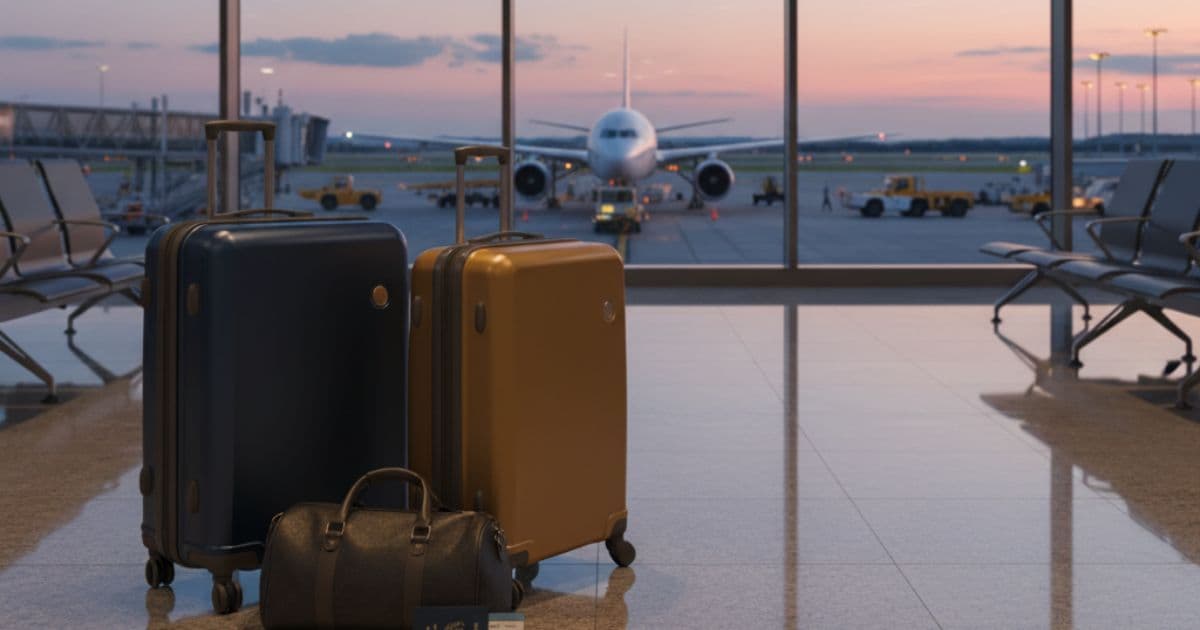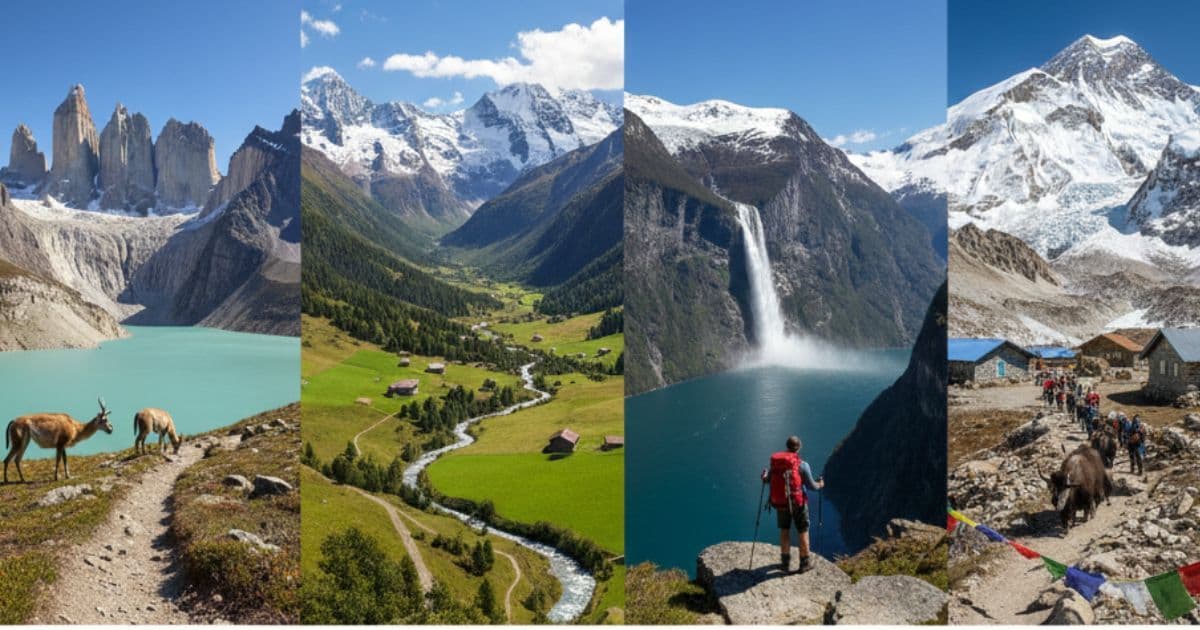How to Plan an International Trip: A Step-by-Step Guide

How to Plan an International Trip: A Step-by-Step Guide
Traveling abroad for the first time is one of the most exciting experiences anyone can have. The idea of exploring a new country, tasting unfamiliar cuisines, meeting people from different cultures, and seeing famous landmarks in person is truly special. But as thrilling as it sounds, planning an international trip can also feel a bit confusing, especially when you have to manage so many things such as passport, visa, flights, money, and packing. Many people get stuck wondering where to start and what to do first, which often leads to stress or last-minute chaos.
The truth is, planning an international trip is not difficult if you follow a clear process. It’s all about staying organized, doing your research early, and preparing the right way. Whether you’re traveling for a vacation, work, or even a short getaway, proper planning can save you time, money, and frustration.
In this detailed guide, you’ll find a complete step-by-step plan that covers everything from getting your passport ready to packing your backpack smartly. Let’s get started.
1. Choose Your Destination Wisely
The first step in planning your trip abroad is deciding where you want to go. Think about what kind of experience you want. Are you dreaming of beaches, mountains, cities full of history, or peaceful countryside escapes?
Once you have a few options in mind, narrow them down by considering these factors:
• Budget: How much can you comfortably spend on the trip?
• Season: What will the weather be like when you plan to visit?
• Visa process: Does the country offer visa-free travel, visa on arrival, or a long approval process?
• Safety: Check if the destination is safe for tourists.
• Language & culture: Consider how easy it will be to communicate and adapt.
If it’s your first international trip, start with destinations that are tourist-friendly and easy to navigate, such as Thailand, Singapore, Dubai, or Bali.
2. Check and Update Your Passport
Your passport is your ticket to the world. Make sure it’s valid for at least six months beyond your intended return date, as most countries follow this rule.
If you don’t have one, apply early through your country’s official passport portal. For Indian travelers, the Passport Seva website is where you can submit your application and schedule an appointment.
Pro tips:
• Keep at least two photocopies of your passport in separate bags.
• Email a scanned copy to yourself for easy access.
• Always store your passport in a waterproof cover or travel wallet.
3. Understand the Visa Process
Every country has different visa requirements, and it’s important to check them before booking flights. Visit the official embassy or consulate website of your chosen destination to get the most accurate information.
Here’s what you need to check:
• Visa type: Tourist, business, or student.
• Documents required: Passport, photos, bank statements, and invitation letters if needed.
• Processing time: Some visas take days, while others can take weeks.
If you’re new to international travel, consider countries that offer visa-free or e-visa options like Sri Lanka, Indonesia, Maldives, and Vietnam. They are much easier and quicker to travel to.
4. Set a Realistic Travel Budget
Your budget decides how comfortable and long your trip will be. A common mistake travelers make is underestimating small expenses like local transport or meals.
Break your budget into clear categories:
• Flights
• Visa and insurance
• Accommodation
• Food and drinks
• Activities and sightseeing
• Local transport
• Shopping and emergencies
Keep an extra 10–15% buffer for unexpected costs. You can also use apps like Trail Wallet or Mint to track daily expenses. If you’re traveling to multiple countries, always check exchange rates and carry a mix of cash and cards.
5. Book Your Flights Early
Flight tickets are usually the most expensive part of international travel. To save money, book them at least 6 to 8 weeks in advance.
Here’s how to get better deals:
• Use flight comparison tools like Skyscanner, Google Flights, or Kayak.
• Turn on price alerts to get notified when fares drop.
• Try flying midweek (Tuesday or Wednesday) since fares are often lower.
• Be flexible with your dates and nearby airports.
Always check the airline’s baggage rules and transit policies before booking. Some connecting flights may require a transit visa, so read the fine print carefully.
6. Find the Right Accommodation
Your stay can shape your travel experience. Decide whether you want comfort, adventure, or a local experience.
Here are some good options:
• Hotels for convenience and privacy.
• Hostels for budget stays and meeting other travelers.
• Airbnbs or homestays for a local experience.
Tips when booking:
• Read reviews carefully.
• Check if the place is near public transport or tourist spots.
• Avoid areas that seem too isolated, especially if you’re traveling alone.
For safety, email your accommodation details (address and contact number) to a family member or friend before your trip.
7. Buy Travel Insurance
Travel insurance might feel unnecessary, but it can save you from major trouble. It covers things like medical emergencies, lost luggage, trip cancellations, and flight delays.
Most travel insurance plans are affordable and can be purchased online. Make sure your policy covers:
• Health emergencies
• Flight cancellations
• Lost baggage or theft
• COVID-related delays (if applicable)
Keep both printed and digital copies of your insurance policy.
8. Create a Well-Structured Itinerary
A proper itinerary helps you make the most of your time abroad. It prevents confusion and helps balance sightseeing with relaxation.
To create a realistic plan:
• List all major attractions you want to visit.
• Group nearby spots together for each day.
• Leave some free time for spontaneous exploring.
You can use free tools like Google My Maps or TripIt to organize your itinerary digitally. Always keep a copy of your schedule offline in case you lose internet access.
9. Manage Currency and Payments
Before leaving, check the exchange rate of your destination’s currency. Avoid exchanging large amounts at the airport since their rates are higher.
Best practices:
• Get your currency from authorized forex dealers.
• Carry a forex card for safe digital transactions.
• Keep some cash for taxis, food stalls, and emergencies.
• Inform your bank that you’ll be traveling abroad to avoid card blocking.
Apps like Wise (TransferWise) and Revolut make international spending easy by offering better exchange rates.
10. Organize All Important Documents
Losing a document while traveling can be stressful, so organize everything beforehand.
Checklist:
• Passport and visa
• Flight tickets
• Hotel booking confirmation
• Travel insurance papers
• Currency receipts and ID cards
• Emergency contacts
Carry a small folder for physical copies and save digital versions on Google Drive or your email.
11. Take Health Precautions and Vaccinations
Some countries may require vaccination certificates, especially if you’re traveling from or to certain regions.
Visit your doctor a few weeks before your trip for a basic check-up. Carry necessary medications in their original packaging to avoid issues at customs.
Include a mini first-aid kit in your backpack with painkillers, bandages, and cold medicine.
12. Learn About Local Etiquette and Culture
Before you arrive in a new country, spend time understanding its local customs. Small gestures of respect can make a big difference in how people treat you.
Things to learn:
• Basic greetings in the local language.
• Dining manners and tipping culture.
• Dress codes for religious or cultural sites.
• Local laws and taboos.
Doing this not only makes your trip smoother but also helps you connect with locals on a deeper level.
13. Pack Smart and Light
Packing is often the most stressful part of traveling, but a smart strategy can make it easier. Don’t pack everything, pack only what you truly need.
Essentials for your backpack:
• Clothes suitable for the weather.
• Travel-size toiletries and towel.
• Power bank, universal adapter, earphones.
• Copies of important documents.
• Snacks, reusable bottle, and basic medicines.
Roll your clothes to save space, and always carry one change of clothes in your hand luggage in case your suitcase gets delayed
14. Stay Connected During Your Trip
Communication is important for both convenience and safety. You can choose from:
• International roaming plans from your network provider.
• Local SIM cards available at the airport or city shops.
• eSIM services like Airalo or Nomad for easy digital setup.
Also, download offline maps of your destination on Google Maps before departure. This will help you navigate even without internet access.
15. Get Familiar with Airport Procedures
Airports can be confusing if you’ve never traveled internationally. Arrive three hours before your flight, especially for the first time.
Follow these steps:
1. Go to the airline counter for check-in.
2. Drop your luggage and collect your boarding pass.
3. Pass through security and immigration checks.
4. Wait at your boarding gate until the flight is announced.
Always keep your travel documents easily accessible, and listen carefully to announcements to avoid missing important updates.
16. Enjoy Your Journey and Stay Safe
Once you land, take a deep breath and enjoy every moment. Traveling abroad is not just about sightseeing but also about learning and growing.
Be cautious in crowded areas, keep your valuables safe, and always carry a copy of your ID. Use trusted transport options like Uber, Grab, or local registered taxis.
Try local cuisines, meet new people, and capture your memories through photos or journals. Every country has something unique to offer, so travel with an open mind and a curious heart.
Wrapping Up Your Travel Plan
Planning an international trip doesn’t have to be complicated. When you follow the steps in this guide from choosing your destination and sorting your visa to budgeting, booking, and packing the process becomes smooth and enjoyable. The key is to prepare early and stay organized throughout.
Traveling abroad is one of the best investments you can make in yourself. It teaches independence, confidence, and a new way of seeing the world. So don’t wait, start your planning today, and soon you’ll be walking through airports with excitement and a passport full of dreams.



